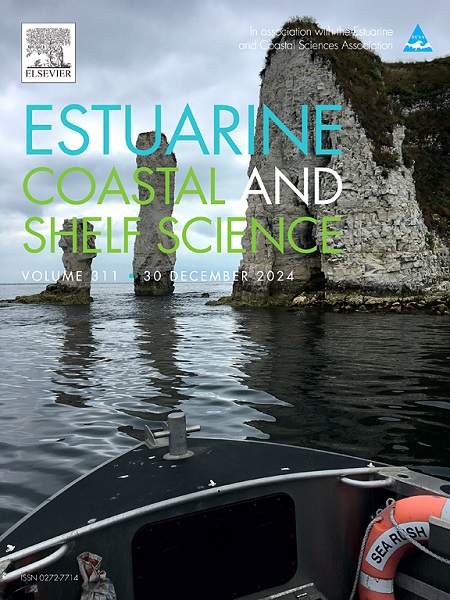Effect of gillnet mesh size on catch efficiency and bycatch in the Greenlandic lumpfish (Cyclopterus lumpus) fishery
IF 2.6
3区 地球科学
Q1 MARINE & FRESHWATER BIOLOGY
引用次数: 0
Abstract
The Greenlandic lumpfish (Cyclopterus lumpus) fishery is among the largest lumpfish fisheries in the world and serves as an important source of income for many local small-scale fishers. The fishery primarily targets females for their highly valued roe, using gillnets deployed from smaller vessels. However, challenges with unwanted bycatches raise concerns about the sustainability of the fishery. This study examines the impact of three different gillnet mesh sizes on the catch efficiency of lumpfish and non-target species. Results demonstrate that reducing the mesh size from the currently regulated 135 mm–120 mm (half mesh) can increase the catch probability of female lumpfish by 32 % while the capture for male lumpfish was estimated to increase by 240 %. Conversely, increasing the mesh size to 150 mm (half mesh) reduces female lumpfish catches by 70 % and 94 % for males respectively. The species composition was not affected to the same extent by changing mesh size. Despite the increased catch efficiency of lumpfish with smaller mesh sizes, the potential for higher seabird bycatch remains a significant concern, preventing recommendations for regulatory changes based on the current data.
刺网网目尺寸对格陵兰圆头鱼捕捞效率和副渔获量的影响
格陵兰的圆头鱼(Cyclopterus lumpus)渔业是世界上最大的圆头鱼渔业之一,是许多当地小规模渔民的重要收入来源。渔业主要针对雌性,因为它们的鱼卵价值很高,使用的刺网是从较小的船上部署的。然而,不受欢迎的副渔获带来的挑战引起了人们对渔业可持续性的担忧。本研究考察了三种不同刺网孔径对块状鱼和非目标鱼种捕获效率的影响。结果表明,从目前规定的135 mm - 120 mm(半目)的网目尺寸减少,可使雌块鱼的捕获概率增加32%,而雄块鱼的捕获概率估计增加240%。相反,将网目尺寸增加到150毫米(半目),雌鱼和雄鱼的捕获量分别减少70%和94%。不同网目尺寸对鱼种组成的影响程度不同。尽管较小网目尺寸的块状鱼的捕捞效率提高了,但潜在的更高的海鸟副渔获量仍然是一个重大问题,阻碍了根据当前数据提出监管改革建议。
本文章由计算机程序翻译,如有差异,请以英文原文为准。
求助全文
约1分钟内获得全文
求助全文
来源期刊
CiteScore
5.60
自引率
7.10%
发文量
374
审稿时长
9 months
期刊介绍:
Estuarine, Coastal and Shelf Science is an international multidisciplinary journal devoted to the analysis of saline water phenomena ranging from the outer edge of the continental shelf to the upper limits of the tidal zone. The journal provides a unique forum, unifying the multidisciplinary approaches to the study of the oceanography of estuaries, coastal zones, and continental shelf seas. It features original research papers, review papers and short communications treating such disciplines as zoology, botany, geology, sedimentology, physical oceanography.

 求助内容:
求助内容: 应助结果提醒方式:
应助结果提醒方式:


